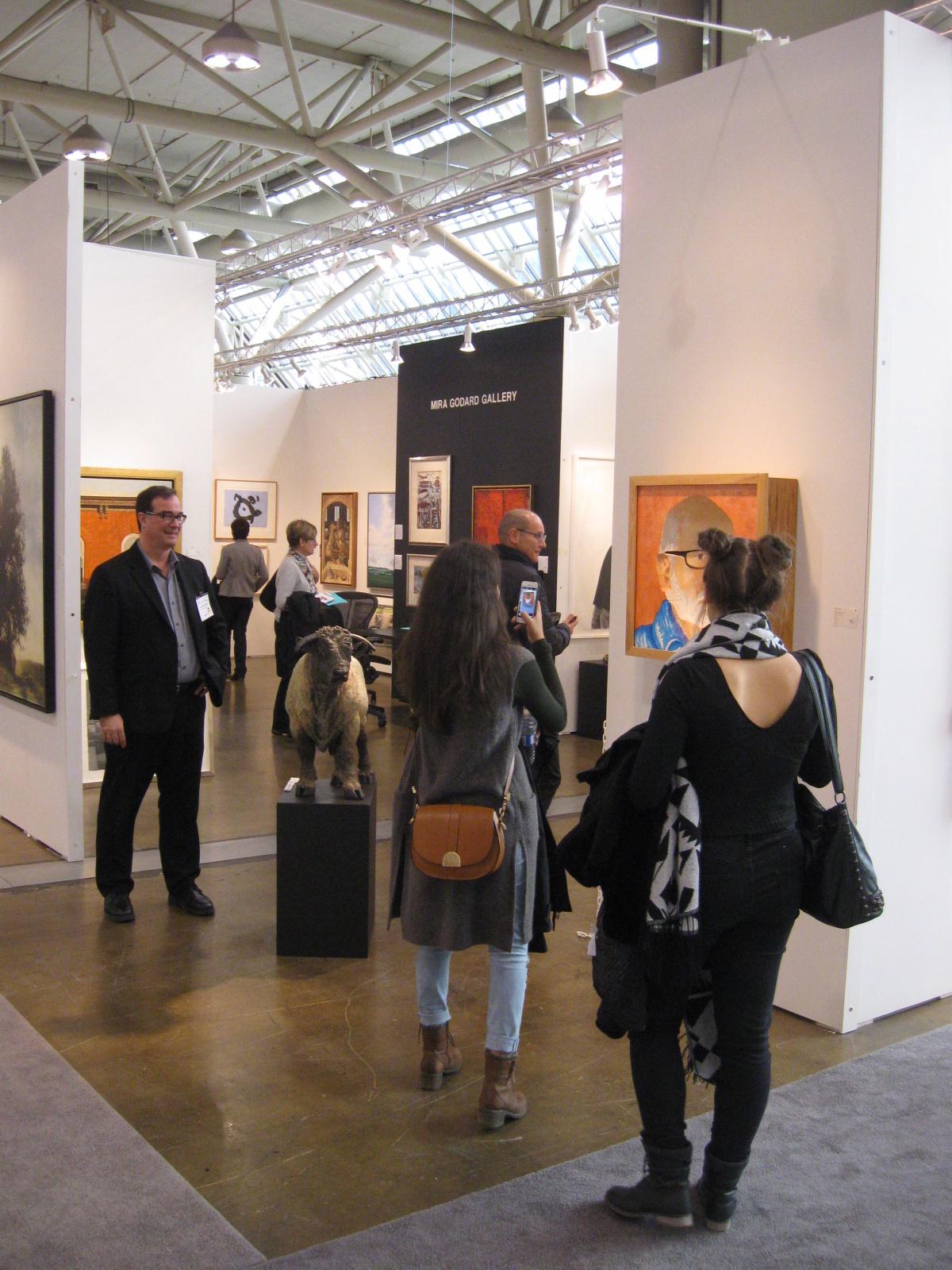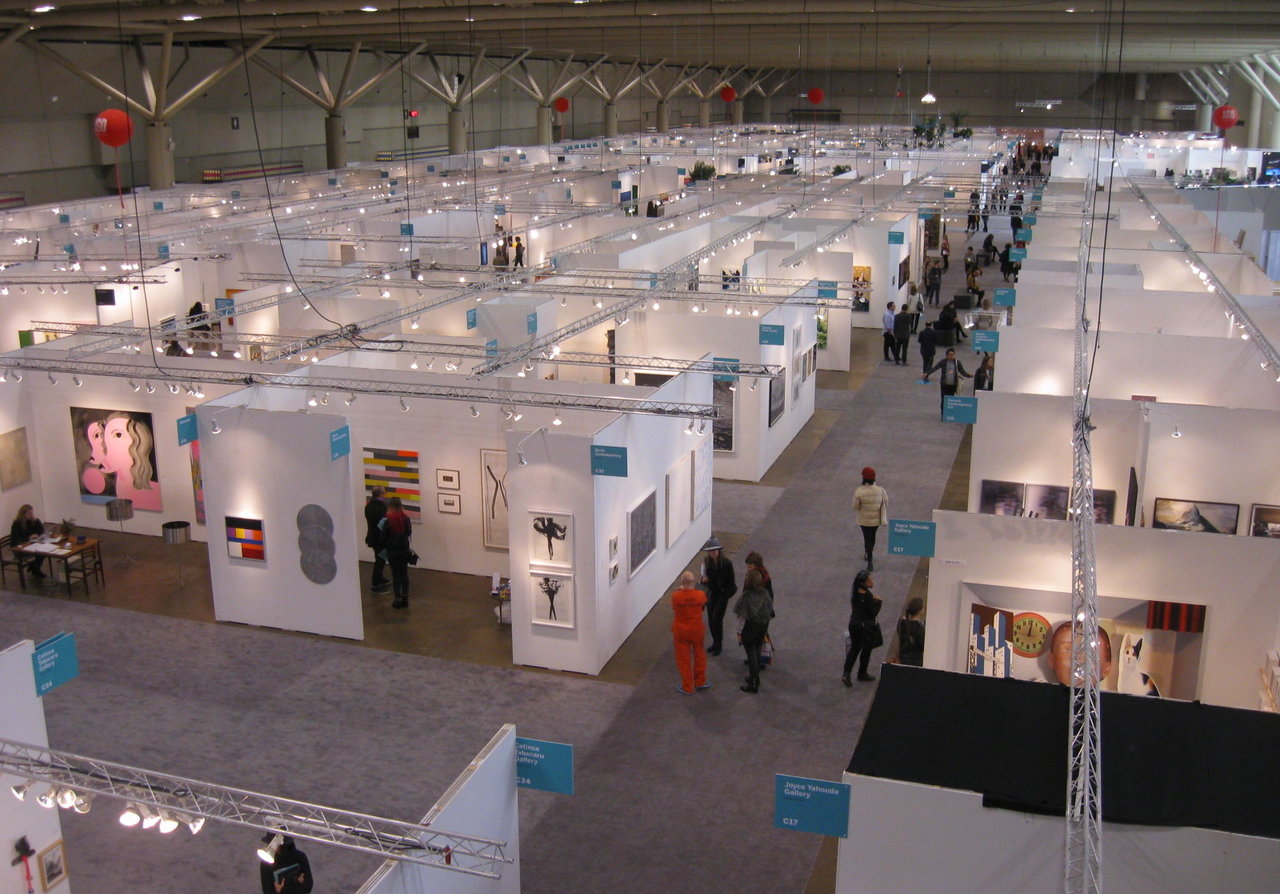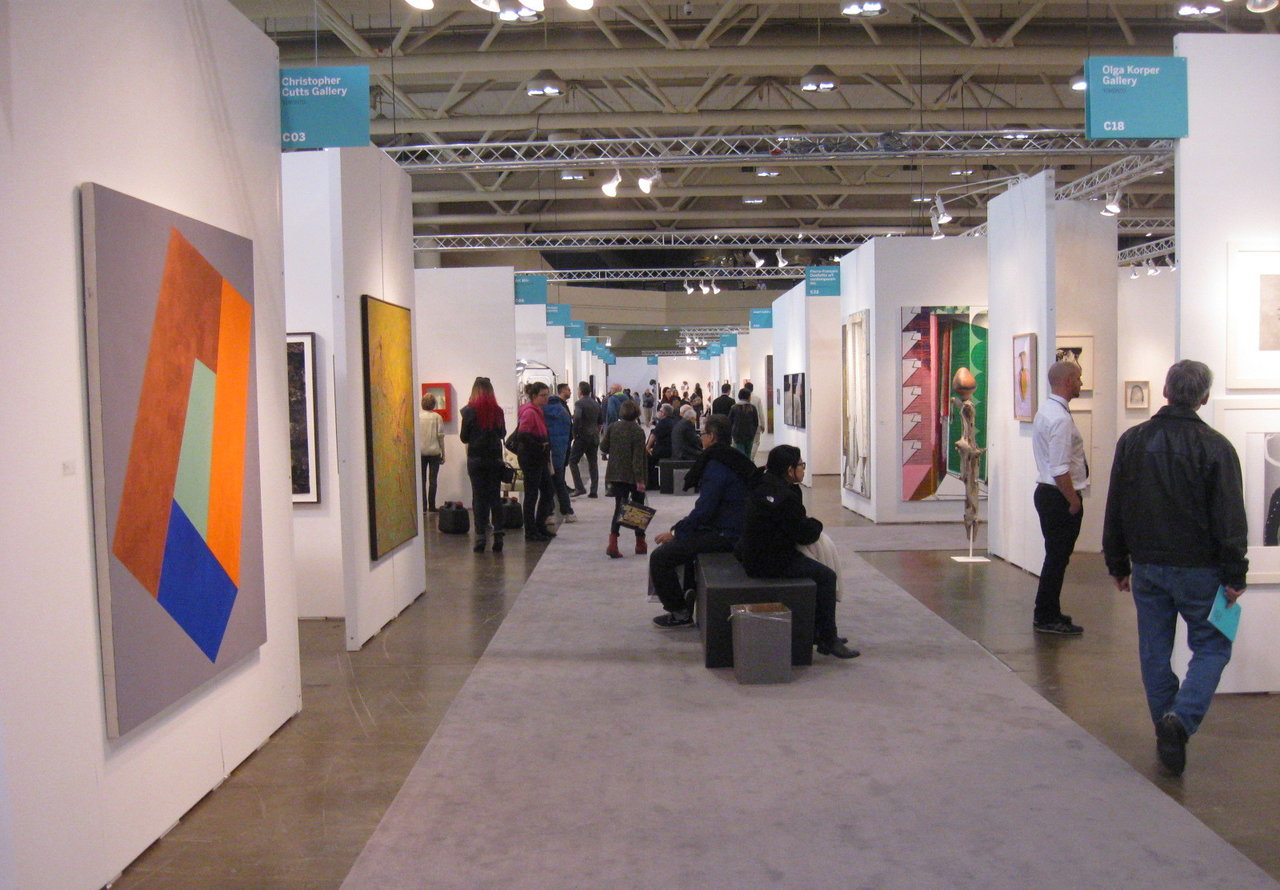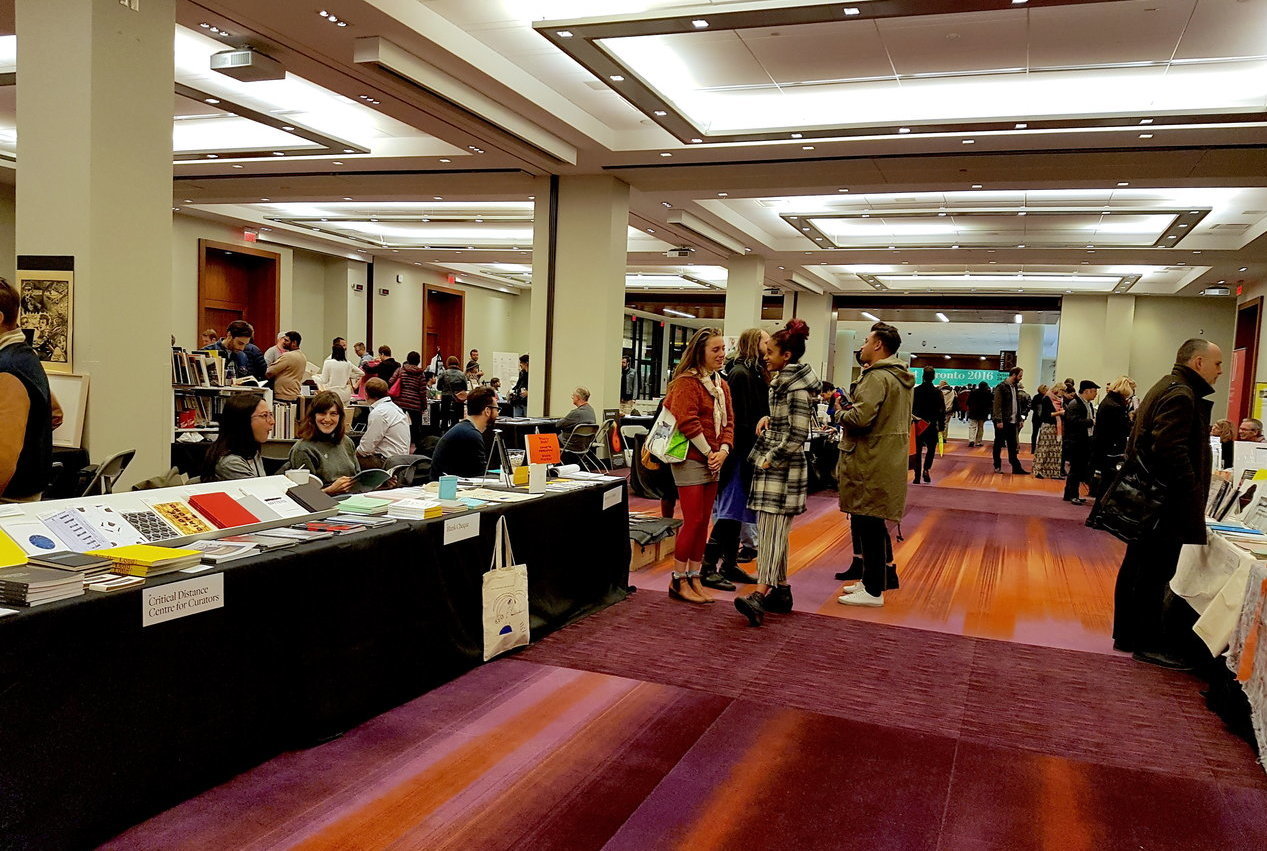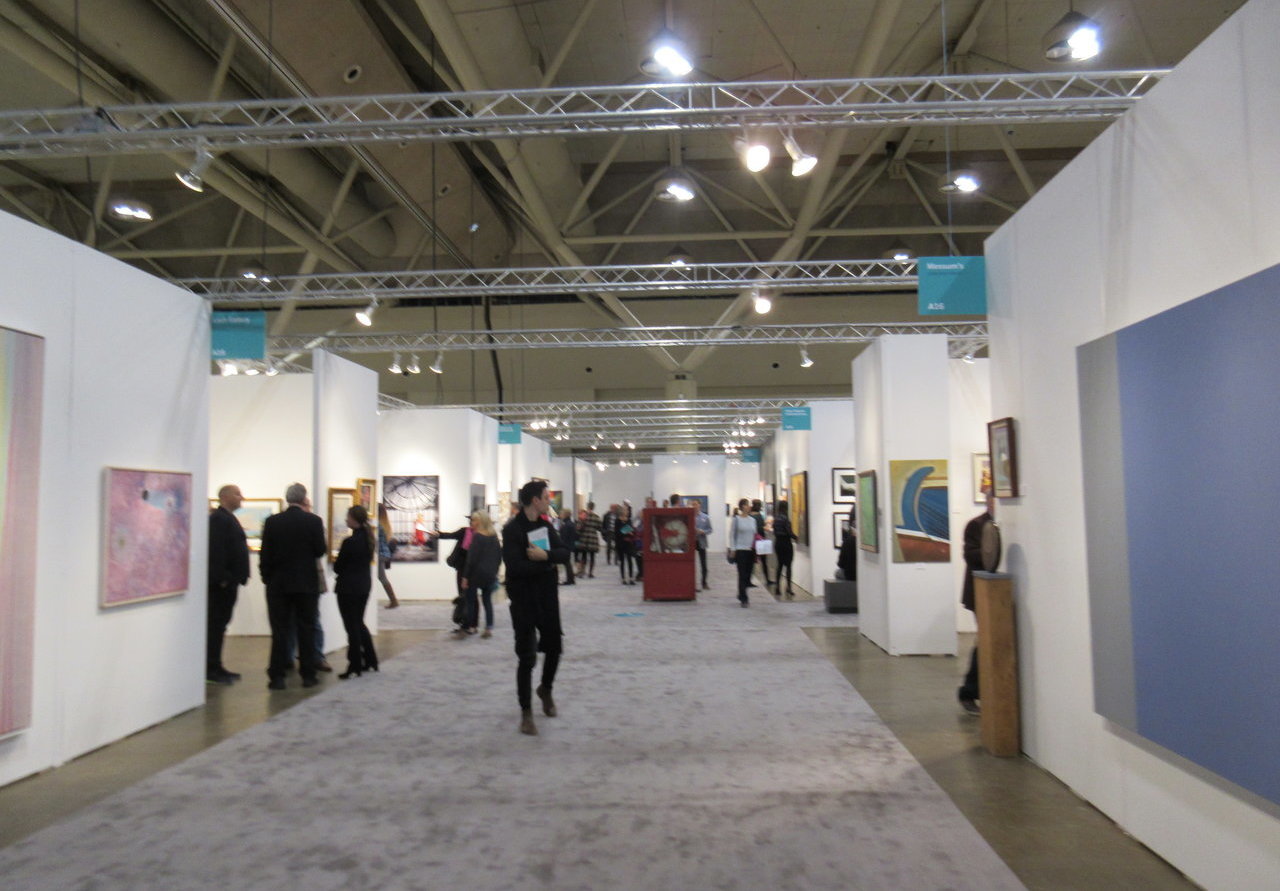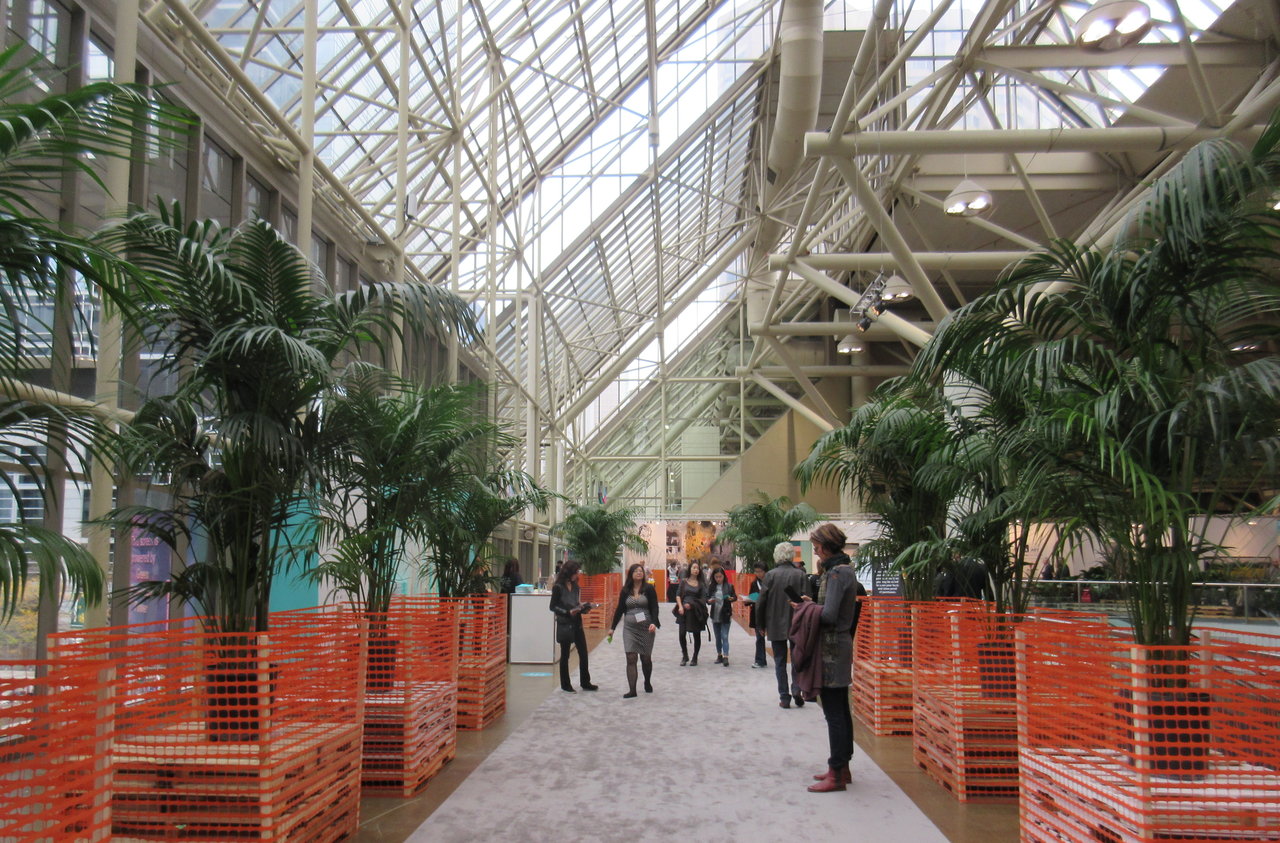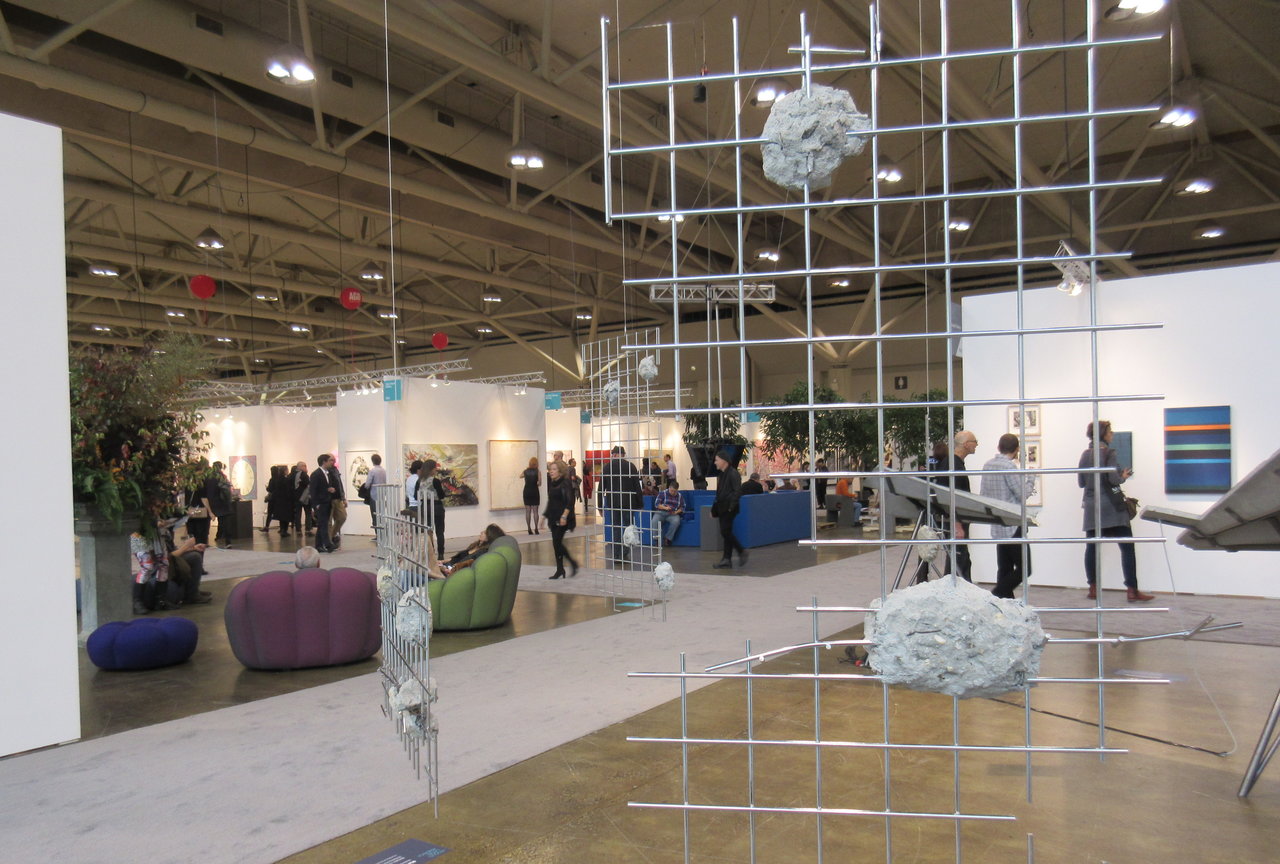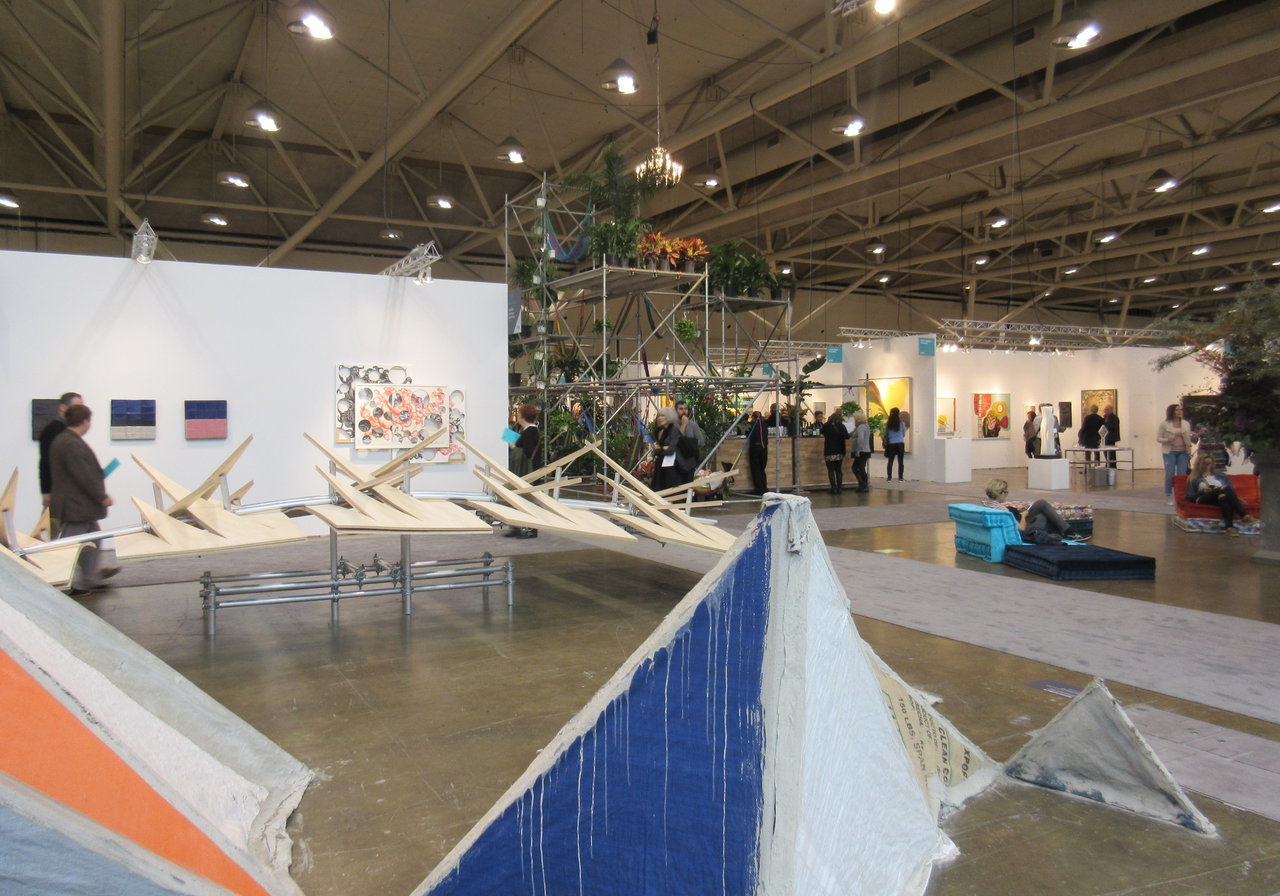Art Toronto 2016
On the last day of the Art Fair crowds have dwindled, gallerists were mostly exhausted and took tally of the event. Gisella Giacalone, owner and director of Mira Godard Gallery felt very encouraged to so see many new collectors coming to her booth. Sales had been good for her this year.
There were individual artist booths this year, a new addition to the Fair. Artist, Angela Leach from the Heringer Kiss Gallery of Calgary was enjoying the Fair.
 Angela Leach from the Heringer Kiss Gallery of Calgary
Angela Leach from the Heringer Kiss Gallery of Calgary
I talked with Yael Rosenblut of the Yael Rosenblut Gallery in Santiago, Peru. She was a little discouraged that sales had been slow. In fact, she said, that most of the galleries in the FOCUS: LATIN AMERICA section – some 16 galleries –were also disappointed in their sales, that had been small. She said her gallery would return but she will reconsider what kinds of work they would bring. Shipping work from Peru is expensive and you need the sales to cover your costs and make it worthwhile. The buyers were a little conservative about buying works from artists they were not familiar with. In New York, she said, buyers would not hesitate.
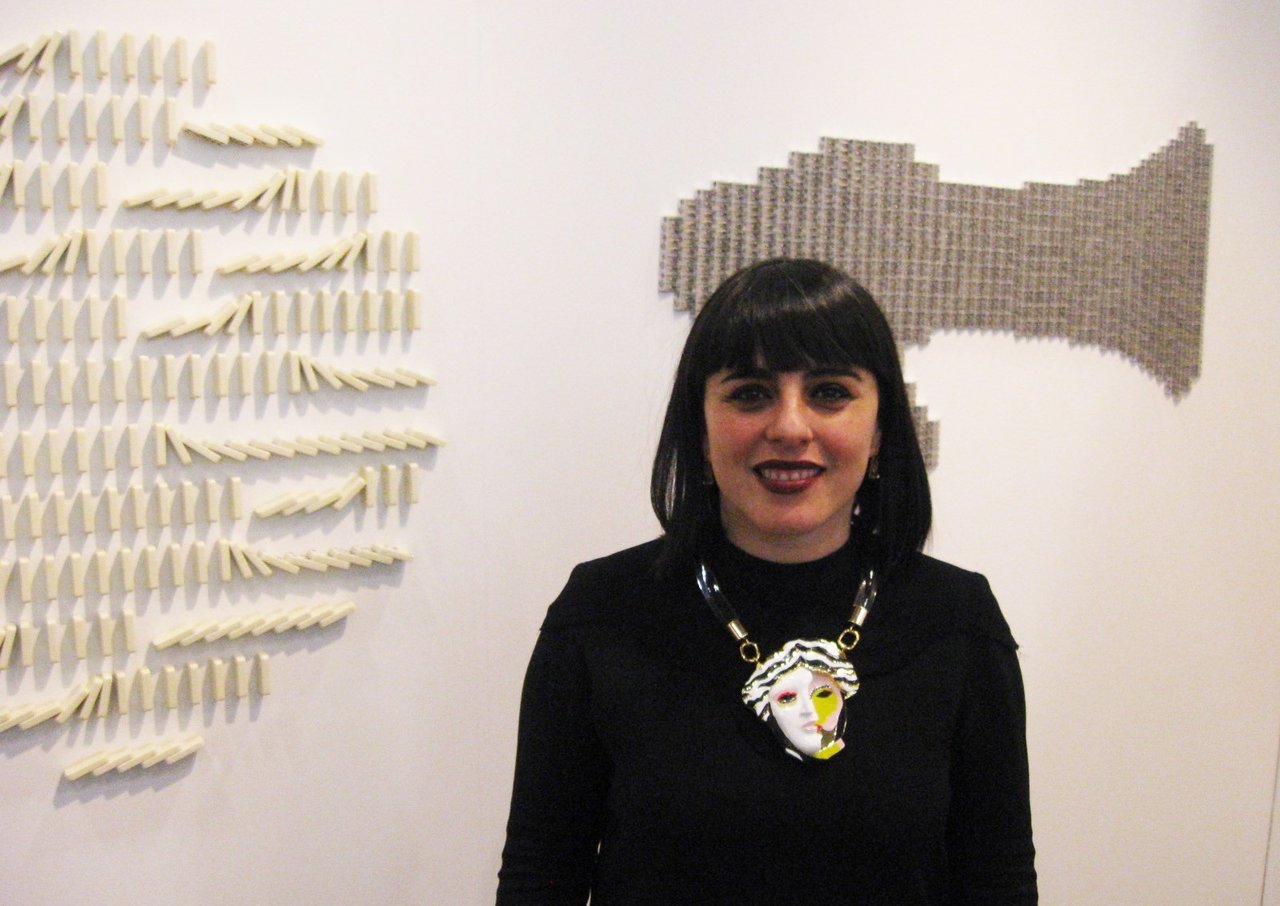 Yael Rosenblut of the Yael Rosenblut Gallery in Santiago, Peru
Yael Rosenblut of the Yael Rosenblut Gallery in Santiago, Peru
Art Toronto Director, Susannah Rosenstock, said that the Fair is an expensive event to run with its 180,000 sq. ft. Her major challenge is to get collectors to the Fair as well as cultivate new collectors to buy. Rosenstock, a former New Yorker, still has been acclimatizing herself to Toronto.
This year marked the absence of the Feature Fair which branded itself as a more curated alternative fair. Some of the galleries who cultivated it through the previous years, like Clint Roenisch, returned to Art Toronto this year.
Besides the solo shows of selected artists, there were another new additions to the Fair this year. Edition, the first international art book fair on the ground floor seemed to be bustling with activity while The West-end Gallery Hop – with 11 galleries on Friday, October 28th – gave a chance to visitors to walk around and get familiar with some of the best galleries in the city.
There were indeed many great works to see at the fair and no doubt galleries both local and international did well enough to return. Perhaps like TIFF, Art Toronto needs to look at having ongoing events to cultivate the collectors and not just wait till its 4 days in October of each year.
Text and photo: Phil Anderson
The Inclusivity of Art Toronto 2016
This year’s edition of Art Toronto broadened the fair’s scope by offering more than just works for sale. Showcasing work from commercial galleries as well as the 2016 RBC Painting Competition finalists, solo galleries, Camp Ooch paddles and the Edition Toronto International Book Fair, Art Toronto 2016 meant that you didn’t need to bring your chequebook to have a good time. This year’s fair managed to successfully integrate the often-disparate factions of the art world for a unique overview of creative expression.
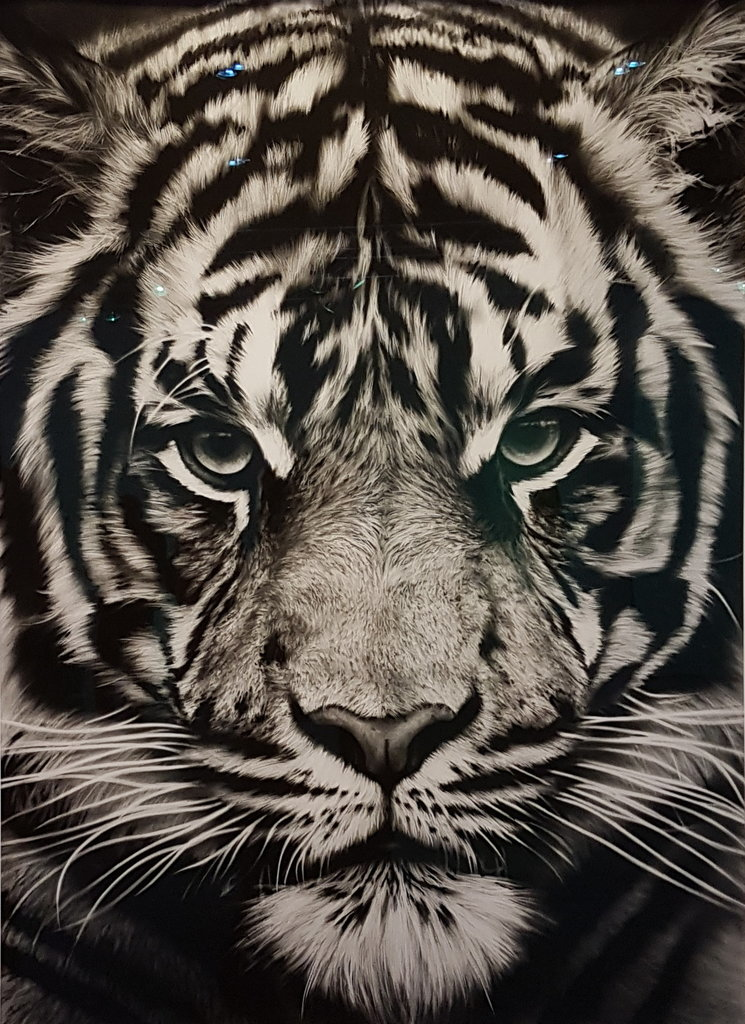 Robert Longo, Untitled (Tiger) – The Mysteries, Archival Pigment Print, 2012. Edition of 25 + Printer Proofs. 115 x 85 cm. Available at Galerie Raphael
Robert Longo, Untitled (Tiger) – The Mysteries, Archival Pigment Print, 2012. Edition of 25 + Printer Proofs. 115 x 85 cm. Available at Galerie Raphael
Located next to Galerie Raphael, which showcased an immense Robert Longo Untitled (Tiger) on its outer walls, the finalists of the RBC Painting Competition had an opportunity to exhibit amidst local and international art world giants. Assessing emerging Canadian painters according to various aesthetic, technical and conceptual criteria since 1999, the RBC Painting Competition supports artists at the earliest stage of their careers. This year’s $25,000 winner was Brian Hunter, a Winnipeg artist whose work was chosen due to its effortless mediation between abstraction and representation. In this booth, Hunter’s work was exhibited alongside the other finalists: Nika Fontaine, Cameron Forbes, Angela Teng, Alex Fischer, Stephanie Hier, Hanna Hur, Brian Kokoska, Andrew Maize, Justine Skahan, M.E. Sparks, Geetha Thurairajah, Amerba Wellmann, and my personal favourite, Keita Morimoto.
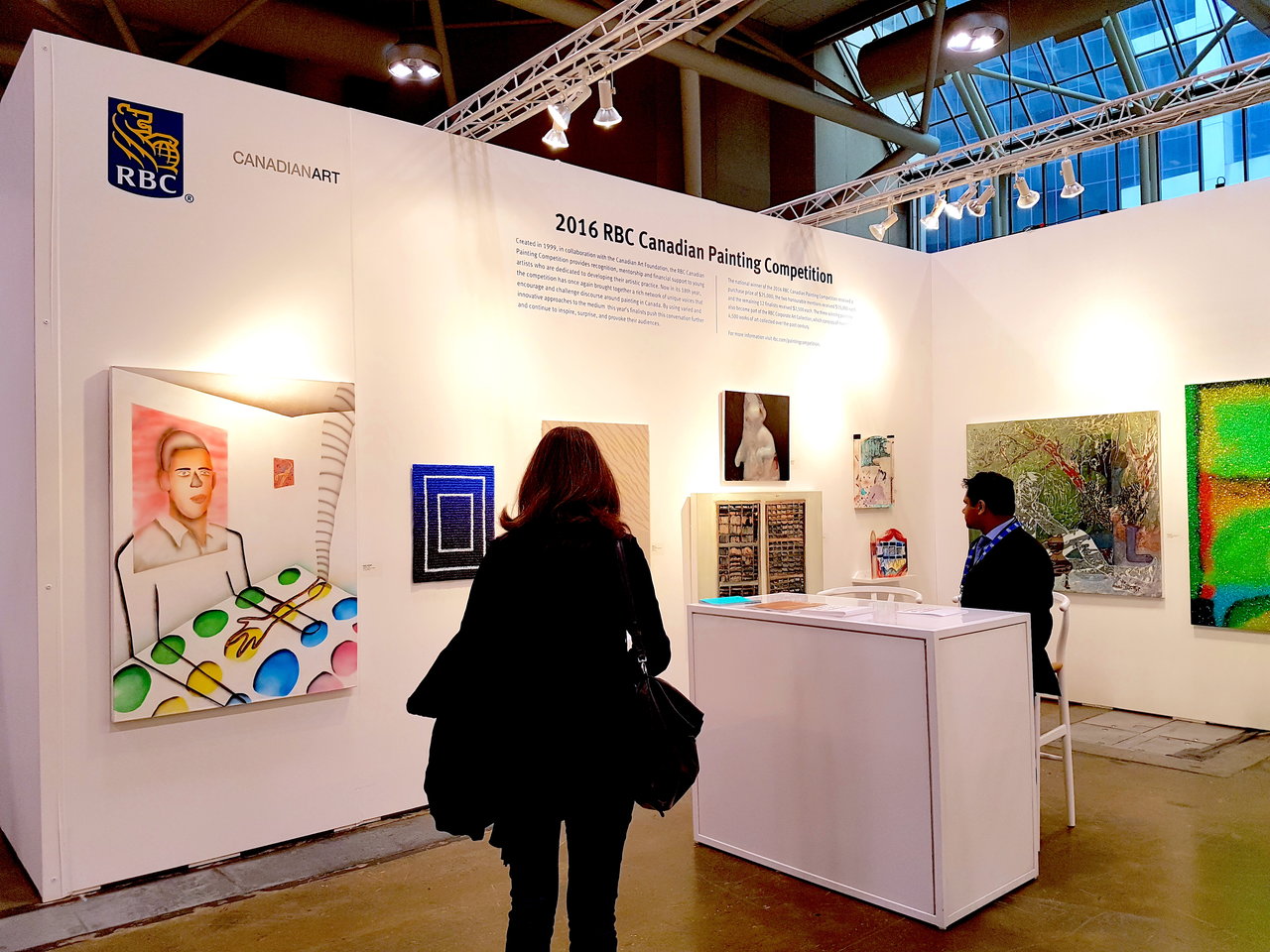 RBC Painting Competition Booth at Art Toronto
RBC Painting Competition Booth at Art Toronto
Keita Morimoto was lucky enough to be represented by the RBC Painting Competition as well as by his Toronto-based gallery, Nicholas Metivier. As I came full circle around the perimeter of the fair, I gravitated towards a luminescent green and yellow painting whose execution, aesthetic and subject matter mesmerized me. Greenwood by Morimoto is a photorealistic portrait of two women bathed in yellow light. With little written context, the juxtaposition between the woman on the right, dressed in a floral printed dress, and the woman on the left, dressed in shorts and a sleeveless button up shirt, created a striking narrative about femininity and gendered attire. Whether or not this was the artist’s intention, this work was a standout for me at this years fair.
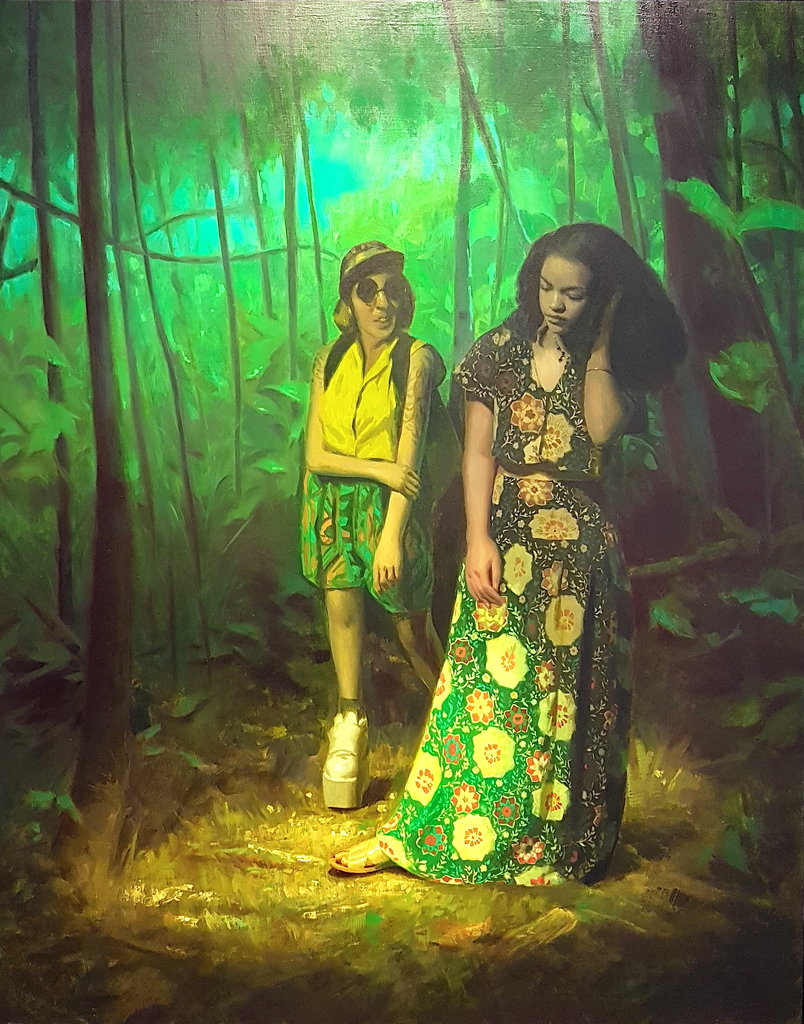 Keita Morimoto, Greenwood, Acrylic and Oil on Linen, 2016. 60 x 48 in. Available at Nicholas Metivier Gallery
Keita Morimoto, Greenwood, Acrylic and Oil on Linen, 2016. 60 x 48 in. Available at Nicholas Metivier Gallery
A standout artwork or presentation for fairgoers will depend entirely on their aesthetic tastes. According to my criterion, which necessitates excellent technique, a communicable concept, and an overall aesthetic harmony to be successful, there were few works that made the cut. This, alongside the fact that a highly saturated visual environment can make a visitor fastidious in their assessments, may explain why so few works stood out. One of the sections that failed in this respect was Focus: Latin America. With the same focus as the previous year, showcasing sixteen galleries from Buenos Aires, Mexico City, Madrid, among many others, the works on display failed to make a lasting impression. With the presumption that art fairs are supposed to showcase works that push the boundaries of artistic production in either concept, technique or aesthetic, only Hector Falcon, an artist with Galeria Enrique Guerrero, was able to hit the mark for me.
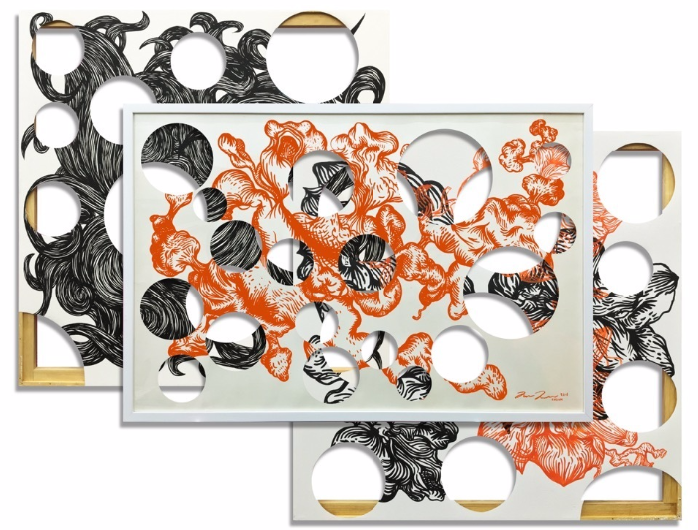 Hector Falcon, Extracción Modular Constructiva “B”, 2016. Available at Galeria Enrique Guerrero
Hector Falcon, Extracción Modular Constructiva “B”, 2016. Available at Galeria Enrique Guerrero
The exhibitions presented by Solo galleries were truly exceptional, and where I spent most of my time. One of the most poignant presentations was Ruth Cuthand’s work with DC3 Projects in Edmonton. Exploring contamination and community, Cuthand presented Don’t Breathe, Don’t Drink, a mixed-media meditation on how contaminated water impacts Indigenous communities. Cuthand’s glass beaded portraits of infectious agents were juxtaposed alongside glass vessels containing beaded viruses: Giardia, Helicobacter, E.Coli, among others. As one among twelve other individual showcases of artists’ work, this particular body of work was not only aesthetically striking, but particularly relevant given the contamination of water being protested in North Dakota.
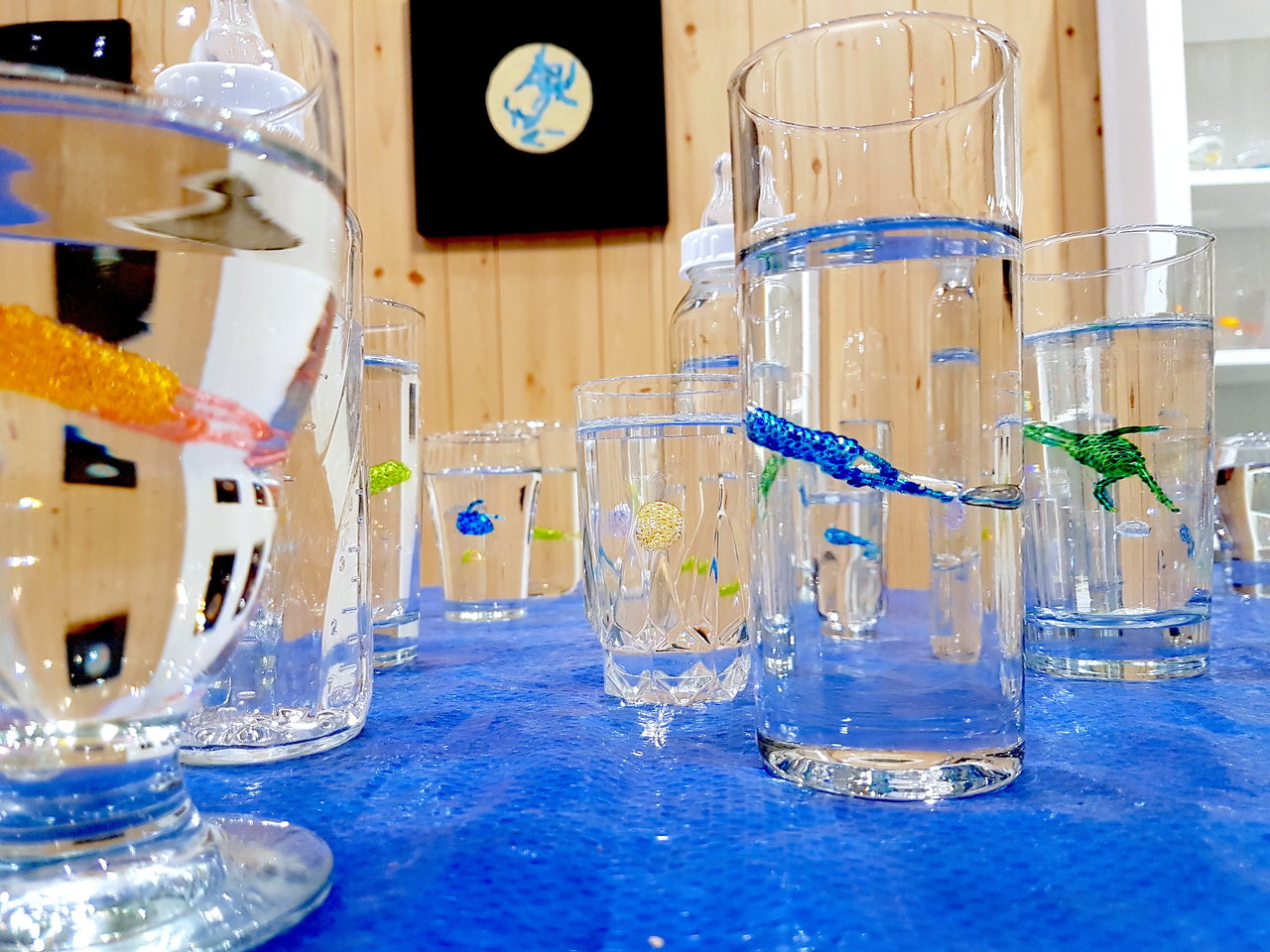 Ruth Cuthand, Don’t Breathe, Don’t Drink, 94 vessels with glass beads and resin, hand-beaded blue tarpaulin tablecloth and gas board, 2016. Available at DC3 Projects
Ruth Cuthand, Don’t Breathe, Don’t Drink, 94 vessels with glass beads and resin, hand-beaded blue tarpaulin tablecloth and gas board, 2016. Available at DC3 Projects
While art for art’s sake is fine within it’s own right, it is truly refreshing when it creates awareness and supports a greater cause. The Camp Ooch paddles, individually designed and painted by notable Canadian artists and celebrities, were exhibited around the Art Toronto grounds. These paddles will be auctioned off on November 2nd to support Camp Ooch, a summer camp that provide enriching, challenging and fun experiences for children with cancer. Beyond the primary money-making function of Art Toronto, this initiative illustrated one of the many ways that art is extending itself to enrich the lives of others.
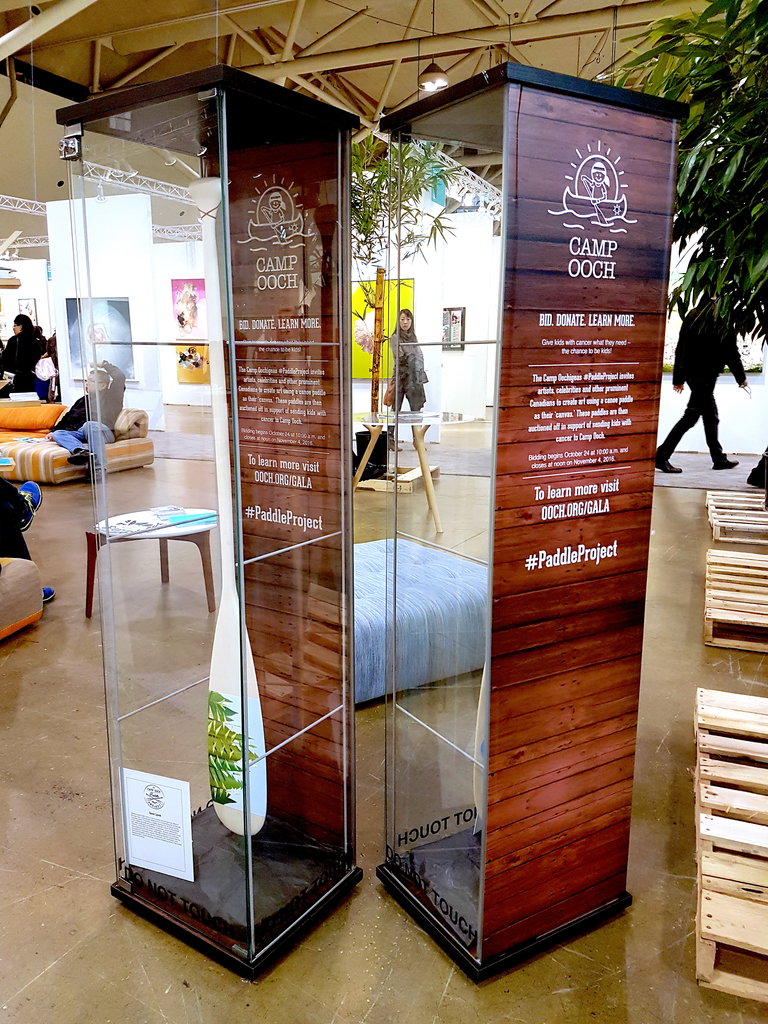 Camp Ooch Paddles displayed at Art Toronto
Camp Ooch Paddles displayed at Art Toronto
Last, but certainly not least, is the newest addition to Art Toronto: Edition, Toronto’s first International Art Book Fair. As a completely free appendage to Art Toronto’s paid programming, visitors are able to view a broad range of work by exhibitors including publishers, commercial galleries, artist-run centres, independent artists, collectives, book-makers and dealers from around the globe. The selection of prints, multiples, pins, books, editions, stickers and more was a welcome addition to this year’s fair. While the upper level’s artworks are unattainable for less affluent visitors, the main level offered a glimpse into alternative collecting, and how young and enthusiastic collectors can build a limited edition collection without breaking the bank.
Text and photo: Megan Kee
Art Toronto 2016
This year’s Art Toronto created a somewhat different space at the Metro Toronto Convention Centre than in the previous years. The colossal space still was broken into sub units, in which an impressive variety of contemporary galleries showcased their works. It seems more compressed this year, takes up a smaller area but feels airier. It reminds me a of World’s Fair or Crystal Palace (complete with a similar glass ceiling of Joseph Paxton’s from 1851).
The most complementary aspect of the space is the abundance of plants. While seemingly insignificant, the carefully-placed foliage within the aisles, and by the main escalator, creates a comfortable space for the viewer. The plants softened what could have been a harsh or empty repetition of white cubes, in which galleries entice the viewer with their displays. Art exhibitions are often plagued by a perceived sense of inaccessibility and elitism; however, this could not be further from the experience of Art Toronto. All gallery staff are delighted to answer questions about exhibited works, as well as to greet those who appeared deeply engaged with the art. Art Toronto feels communal and open to everyone.
I was instantly captivated by Michael Burges’s gold work, “Self-Emergent Painting No. 1”, presented by Odon Wagner Contemporary Gallery. It reminded me of Andy Warhol’s “Gold Marilyn” (1962) which memorializes the starlet in a similar canvas of gold work that recalls Byzantine influences. Burges’s painting evoked both. Eager to learn more, I asked one of the gallery’s attendants about how the work was made. She informed me that it was a type of reverse glass work in which the artist adhered gold leaf directly to the glass, while leaving certain areas uncovered. After applying the gold, Bruges painted over the gold leaf with acrylic paint — which accounts for the spots of colour coming through from behind in places. Burges, who works primarily out of Germany, also works in silver and platinum leaf. This work was mesmerizing at first glance; however, after having learned of its creation, it became even more unique.
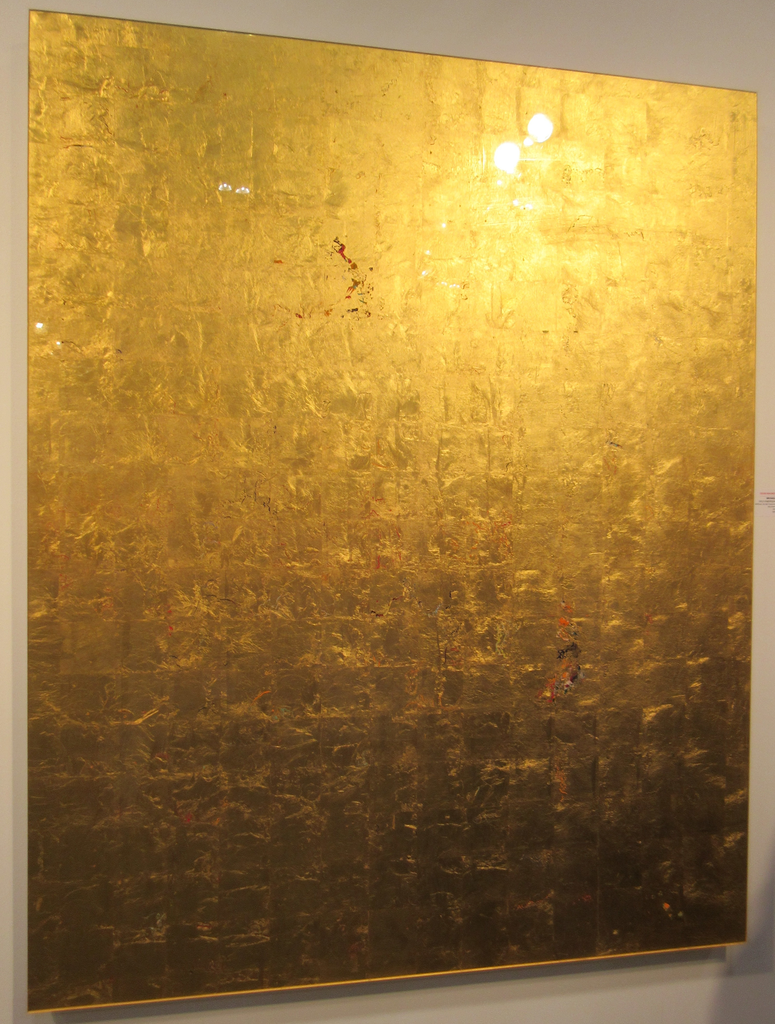 Michael Burges, acrylic, 23.75CT gold & plexiglass on aluminum, 59 x 47 in /150 x 120 cm, Odon Wagner Contemporary, Toronto
Michael Burges, acrylic, 23.75CT gold & plexiglass on aluminum, 59 x 47 in /150 x 120 cm, Odon Wagner Contemporary, Toronto
Zhuang Hong Yi’s rice paper piece is visually delightful. “Blue to Orange” appeared to be a large square of folded rice paper flowers. The work was painted in orange and blue, such that, when viewing the work from one direction, it appeares orange, and when viewing the work from the opposite direction, it appeares blue. The gradation of colour is astonishing, and Zhuang Hong Yi’s mastery of his craft is manifest.
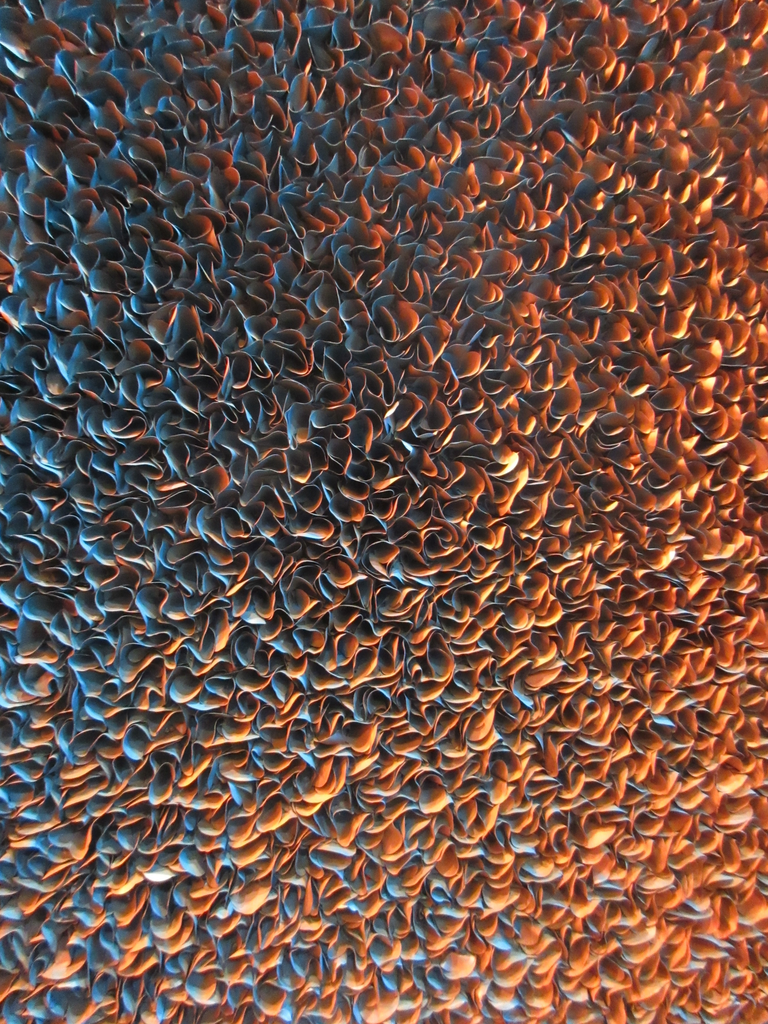 Zhuang Hong Yi, Blue to Orange, Rice paper on canvas, 135 x 135 cm / 53. 1 x 53. 1 in, Modus Art Gallery, Paris
Zhuang Hong Yi, Blue to Orange, Rice paper on canvas, 135 x 135 cm / 53. 1 x 53. 1 in, Modus Art Gallery, Paris
Chris Millar’s “4E7” was evocative of sixteenth century Netherlander “enclosed gardens.” The mixed media work, unlike any I had ever seen, resembled a sort of miniature fairy world. The work was both visually overwhelming in its ‘horror vacui’ as well as its small scale. It is easy to get lost meandering through the crannies of this miniature work.
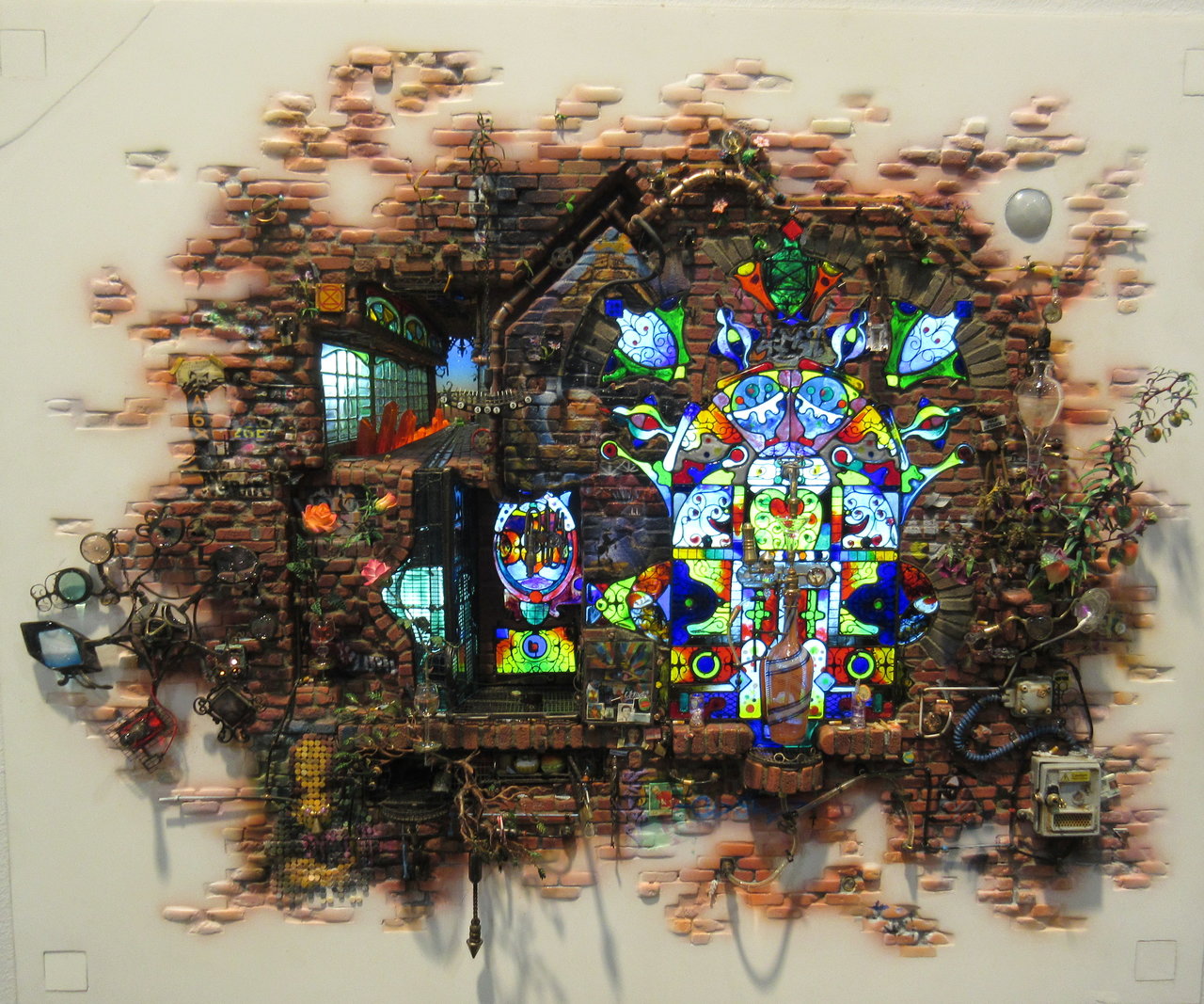 Chris Millar, 4E7, mixed media, 13.75” x 109.2 cm x 25.4 cm & 35 x 43 x 10 cm, Galerie Nicolas Robert, Montreal
Chris Millar, 4E7, mixed media, 13.75” x 109.2 cm x 25.4 cm & 35 x 43 x 10 cm, Galerie Nicolas Robert, Montreal
You can just as easily get lost in this fair but it would be a pleasurable experience since wherever you go, you find new treasures.
Text and photo: Laura Hutchingame
*Exhibition information: : October 28 – 31, 2016, METRO TORONTO CONVENTION CENTRE, North Building, Exhibit Hall A & B, 255 Front Street West. Hours: Fri & Sat, 12 – 8 pm., Sun & Mon, 12 – 6 pm.

